
 |
|
||
| CHAPTER 3. Components and Systems
Wing Systems Refl ex Systems As discussed in the aerodynamics section, the trailing edge near the root and the tips must stay up during unusually low or negative angles of attack [Figure 2-29] to maintain a positive pitch stability for the aircraft. There are a number of refl ex systems used to accomplish this in emergency situations. 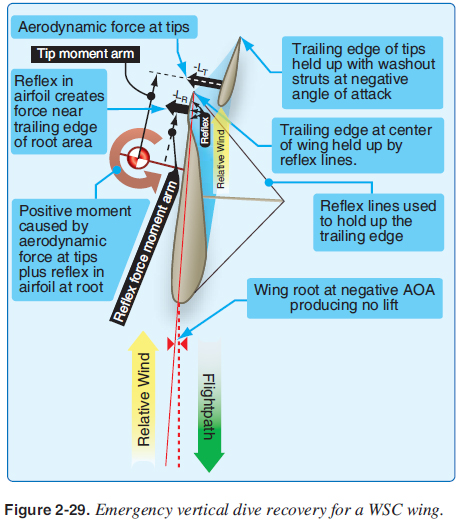 Refl ex cables—most wings with a king post use cables to hold the trailing edge up at unusually low or negative angles of attack. These refl ex cables are secured to the top of the king post and attach to several positions on the trailing edge where the battens are located. Different manufacturers have different positions where these are attached, depending on the design of the wing. Refl ex cables also provide additional refl ex at high speeds because the drag of the wires pulls up the trailing edge, creating more refl ex at these higher speeds. [Figure 3-16] 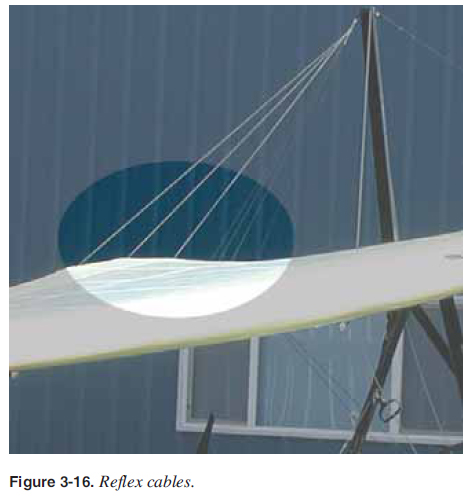 Washout struts—tubes near the tips that keep the tip trailing edge up during very low or negative angles of attack. They can be inside or outside the double surface of a wing. The refl ex cables may not go to the wingtip, so washout struts are used to hold up the trailing edge at the tip at very low and negative angles of attack. [Figure 3-17] 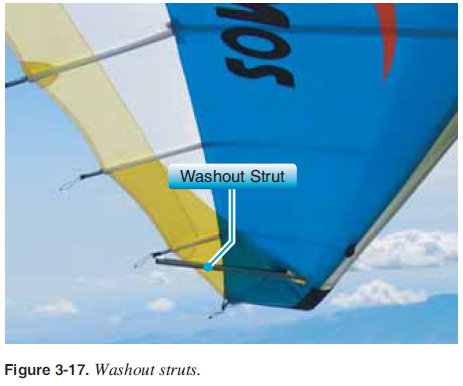 Sprogs—for wings using struts with no king post, sprogs are used to keep the inboard trailing edge up in place of the refl ex cables. A wire attached to the top of the leading edge holds the sprog up in place. [Figure 3-18] 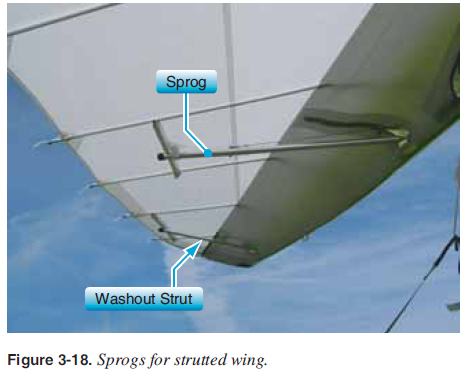 Pitch Control System The pitch control system is a simple hinge on the keel at the hang point that allows the pilot to push the control bar out and pull the control bar in to control pitch. This wing attachment is different for each manufacturer, but all designs have this hang point wing attachment so the control bar is always perpendicular to the longitudinal axis of the aircraft. This raising and lowering of the nose is the pitch control system for the WSC aircraft. [Figures 2-7 and 3-19] 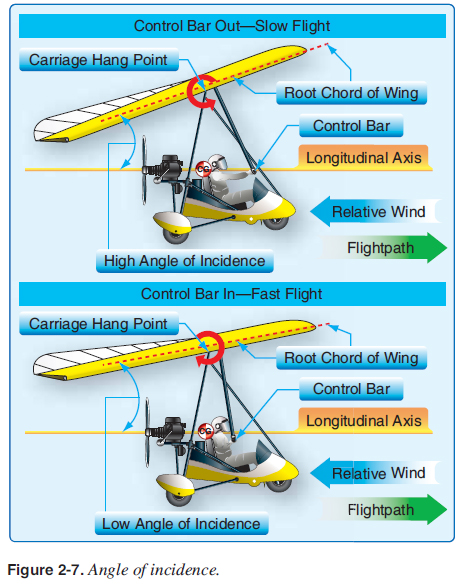 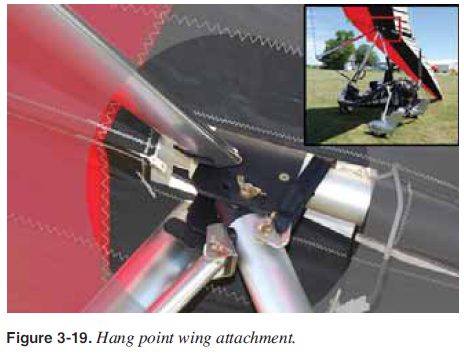 |
| ©AvStop Online Magazine Contact Us Return To Books |